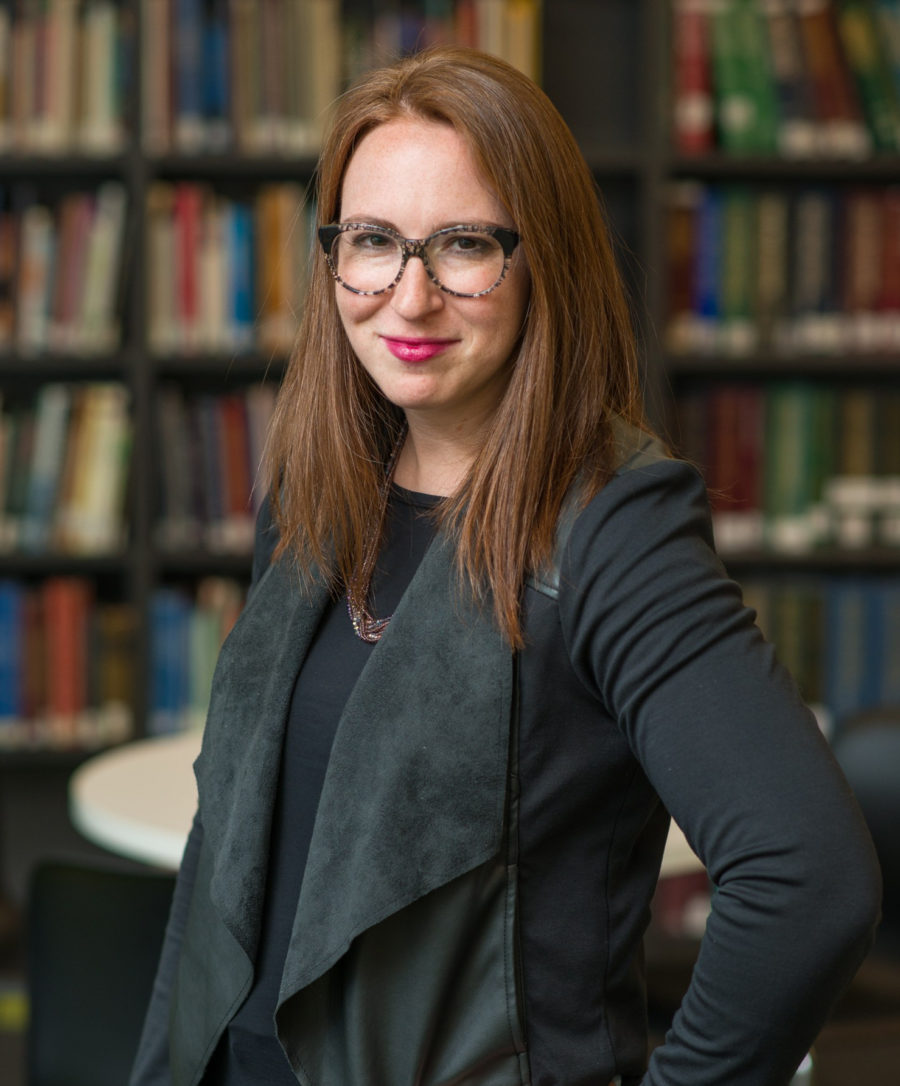The second in a two-part series
Best practices in philanthropy necessarily shift and evolve. In the face of crisis, the rate of change can be spectacular. As a result of COVID-19 and racial justice movements in 2020, many funders dramatically reshaped their giving programs.
Notably, grantmakers tended to embrace practices that philanthropic thought leaders have long been advocating for: reduced grantee burden, a racial equity focus, trust-based principles, inclusivity, power redistribution, community partnerships, and streamlined grant management, to name a few.
Because the sector has come such a long way in just a year, it was exciting to hear the latest advice straight from grantmaking experts in the field. Submittable is grateful to the following thought leaders for sharing philanthropic best practices with us: Yolanda Coentro, Adam Liebling, Jennifer Laszlo Mizrahi, Kris Putnam-Walkerly, Edgar Villanueva, Aaron Dorfman, Jen Bokoff, and Sam Caplan.
If you missed it, be sure to visit Part 1 of this series: “Innovative Giving: Grantmaking Trends and Insight from 8 Experts.”
For funders and grantmakers looking to refine, improve, or revamp a grant program (or even just appreciate where they’ve already aligned with industry best practices), these suggestions are aimed at supporting your future good work and impact.
1. Offer multi-year grants and fund capacity building
“Multi-year, general operating grants are an obvious best practice.

Allow foundation staff to connect to the work, truly support leaders, and remove the responsibilities of an overwhelming bureaucratic set of processes that hinder authentic relationships and otherwise prevent sustainable impact.
Funders should aim to give organizations stability and a longer view with multi-year funding. Lack of such funding makes decision making, innovation, and rapid community response virtually impossible.
Few nonprofits operate in the same way they did just one year ago.
It is critical for grantmakers to respond quickly to community needs, removing structural barriers (especially administrative ones) to enable rapid funding.
The most prominent example of this type of investment in 2020 was that of MacKenzie Scott, whose multi-million dollar, general operating investments for several organizations around the country offered their leaders immediate opportunity to respond and innovate to meet community needs.
Organizations will need continued support to build from wherever they are in the aftermath of such global and national, social and economic, crises. These supports should not be luxuries.
Grantmakers should continue to expand across their investment strategies to fund capacity building for the organizations they care about. Few nonprofits operate in the same way they did just one year ago.
Especially in the coming year and beyond, organizations will need continued support to build from wherever they are in the aftermath of such global and national, social and economic, crises. These supports should not be luxuries. They will be foundational to organizational sustainability.”
—Yolanda Coentro, President and CEO of the Institute for Nonprofit Practice
2. Use All Resources to Dismantle Racism—Not Just 5%
“These are noisy and chaotic times. Those funders who will lead philanthropy through it will see that challenges around climate change, public health, structural racism, and safeguarding democracy are interconnected.

They will understand that if philanthropy stays in reaction mode, these issues will become trends, which would be particularly harmful to the critical work that needs to happen around dismantling structural racism.
In 2021, leaders seeking to enact philanthropic best practices will also realize that to do anti-racism work authentically, effectively, and with integrity, they need to assess not only their grantmaking as a contributing factor and potential solution, but the entirety of their decisions and policies: staffing and governance; vendors and consultants; communication and policy activities. And—particularly for private foundations and donor-advised funds—how and where non-grant money gets invested and parked.
The days of values-neutral investing will pass. The sacred silos separating investment and programmatic strategies will come down and come together.
To that last point, in the near future, funders will look back and consider it absurd—if not embarrassing and regrettable—that they only used, and measured the impact of, 5% of their toolbox. That isn’t to say that foundations should increase their minimum payout. 6%, 10%, that’s besides the larger point.
Funders could still plan for a rainy day (though, to paraphrase PEAK Grantmaking’s Melissa Sines, it’s quite pessimistic to think that things can get rainier!). But while that golden nest egg is sitting around incubating, it should be generating more positive impact toward the funder’s goals. (And certainly not undermine it!)
Before you know it, what was considered radical will be seen for what it is—good common sense, easier than expected, and the right thing to do.
The days of values-neutral investing will pass. The sacred silos separating investment and programmatic strategies will come down and come together. Mission-driven funders are already aligning their wealth and operations to their programmatic strategies and tax-exempt purpose, with a focus on racial justice. There will be more and more.
Just like trust-based philanthropy or paperless processes, once it starts happening, critical mass will be swift, and the rest will be fumbling for justification. Before you know it, what was considered radical will be seen for what it is—good common sense, easier than expected, and the right thing to do.”
—Adam Liebling is a grants management professional, thought leader, and frequent speaker on the future of philanthropy.

3. Fund organizations that resemble the people you serve—and make your own community inclusive
“Grantmakers should prioritize funding for organizations that resemble the communities they serve—problems are best solved by people who experience them firsthand and know both the stakes and the solutions.

Foundations should ask every single one of their grantees and applicants to fill out the demographics section of GuideStar.
If funders do not have people of color, women, and people with disabilities on their team, they should ask themselves what they are going to do to change that so they reflect the communities they serve.
History indicates some of the most talented and impactful people on earth also have disabilities.
Funders should also work to ensure that they fund grantees with disabilities and that people with disabilities are on their teams—fully 1-in-5 people have a disability. We can help grantmakers on this front for free. For example, here are free tools and training specifically for the grantmaking community:
Last year, climate activist Greta Thunberg was recognized as TIME magazine person of the year. Autistic, she calls her neurodivergence her “superpower.”
As we come out of this pandemic, every group will need people who are experts in resiliency, innovation, and strategic thinking.
History indicates some of the most talented and impactful people on earth also have disabilities—from Harriet Tubman who had epilepsy, Thomas Edison who was deaf, to artist Frieda Kahlo with mobility disabilities. People with disabilities must innovate in everything they do, as they must overcome barriers and chart new ways of achieving goals.
As we come out of this pandemic, every group will need people who are experts in resiliency, innovation, and strategic thinking. People with disabilities of all races and backgrounds have built in problem-solving skills and want to contribute to creating a better future for all of us.”
—Jennifer Laszlo Mizrahi, President of RespectAbility
4. Reflect, act, and keep moving forward
“Grantmakers should take time to really reflect on what they did differently last year.

If new practices worked well in the middle of the largest crisis we’ve ever had in a century, they can probably work well when things are calm.
Funders should really think: among the changes we made, what do we want to maintain? What do we want to expand or extend to other areas?
It’s not about patting yourself on the back for a nice conversation and slowly seeping back into your old ways.
If being more trusting of our team working remotely or giving unrestricted dollars to grantees worked well, how else can we be more trusting in our work with our partners and with ourselves?
If acting and deciding faster and getting money out the door more quickly were successful, in what other areas of our foundation could we increase our speed?
No matter what issue you're working on as a funder, if you're not paying attention to how race affects that, then chances are, you're not really addressing the problem fully.
Grantmakers should also be learning from what didn’t work well, and then making conscious decisions and actually moving on them—assign someone to be responsible for whatever the change is going to be going forward, hold them accountable, and set a timeline. It’s not about patting yourself on the back for a nice conversation and slowly seeping back into your old ways.
For grantmakers it’s important to keep your foot on the gas around advancing racial justice because that impacts everything. No matter what issue you’re working on as a funder, if you’re not paying attention to how race affects that, then chances are, you’re not really addressing the problem fully.”
—Kris Putnam-Walkerly, global philanthropy advisor and author
5. Lead with trust and partner with community
“Trust-based philanthropy is becoming more widely adopted and thought of as a best practice.

It’s really about deferring to community as experts and understanding that the people most marginalized by systemic oppression have the best solutions.
In this recent awakening around racial justice, I hope that funders will identify those key leaders in philanthropy, and especially BIPOC-led intermediary organizations, that have been doing this work for a long time and really invest in their infrastructure.
How can we challenge the deficit-minded, competitive nature of grantmaking?
As a funder, you shouldn’t feel that you need to recreate what’s already in place. Find organizations that have established relationships with grassroots communities and trust them to get the money to the right people. These bridge organizations often have the relationships and trust, but lack sufficient capital.
How can we challenge the deficit-minded, competitive nature of grantmaking? Instead of putting out an RFP for Liberated Capital, we worked with established networks to refer partners to us for funding. For example, we partnered with the National Urban Indian Family Coalition to their network of Native-led urban nonprofits to apply for COVID-related grants, knowing that we could fund all of them.
It’s important to be aware on the front end: how much money do you have to move? And how can you get really specific about who you're trying to help?
As our fund grew, one of our questions became, ‘who else should we be funding?’ With an open-ended process, nonprofits who have savvy development teams or established relationships with funders have a competitive advantage. To reach new organizations, we took nominations from current grantees to fund people who are actually on the ground doing the work and have credibility among their community partners.
I totally understand the case against closed applications but when I see open invitations for, say, $500,000 in total, I worry that a lot of people’s time may be wasted and a lot of hopes are raised in vain. It’s important to be aware on the front end: how much money do you have to move? And how can you get really specific about who you’re trying to help?”
—Edgar Villanueva, Principal, Liberated Capital & Decolonizing Wealth Project
6. Examine how you’re sharing and wielding power
“I would encourage grantmakers to ask themselves in the coming year how they are sharing power with the communities they seek to serve.

Traditionally, foundation boards have been composed entirely of family members for family foundations or societal elites, in the case of non-family foundations.
There is a real benefit to including, at the governance level, people who are, or have been in their lifetime, directly in affected by issues of poverty, injustice, and discrimination—they bring different insights into the boardroom.
In 2021, it’s also important to ask: how are foundations wielding the power that they hold?
So, we really encourage foundations to think about sharing power. There are lots of ways to do that, but the ultimate expression of it is adding folks to your board who are maybe less advantaged than everyone that currently serves on your board.
In 2021, it’s also important to ask: how are foundations wielding the power that they hold?
It's not enough to quietly do good work in the background and provide support to awesome nonprofit organizations.
Funders have significant reputational capital—foundations themselves and their trustees as individuals have a whole lot of influence. Are they taking stands and speaking up for what’s right and for the kind of change they want to see in the world?
It’s not enough to quietly do good work in the background and provide support to awesome nonprofit organizations. We also need foundations and their trustees speak up and use their personal platforms to push for a more fair and just society.”
—Aaron Dorfman, President and CEO of the National Committee for Responsive Philanthropy
Looking to streamline your grantmaking process?
Submittable simplifies even robust grant review processes to save you time.
7. Fund disability and prioritize intersectionality
“This may sound like my job to say, but I’m also saying it because it’s critical: fund disability. Persons with disabilities have long been marginalized in everything from democracy to health care to education; this needs to change.

When 1 out of 7 people globally have a disability, it’s a wonder that only 2% of human rights funding from foundations supports disability. It doesn’t add up.
While many foundations are newly prioritizing BIPOC-led organizations and initiatives, very few are looking at the intersectional identity of BIPOC with disabilities.
When we resource and lift up persons with disabilities, society benefits.
Similarly, I’m always shocked that many donors to women’s rights movements do not have an explicit priority area for women with disabilities, especially as 1 in 5 women globally have a disability. When you ignore the disability intersection, you miss a large and important segment of your target population.
The Convention on the Rights of Persons with Disabilities (CRPD) was the first comprehensive international human rights treaty of the 21st century. It shifts the perception of persons with disabilities away from “objects” of charity, medical treatment, and social protection to “subjects” with rights who are capable of making decisions for their lives and being active members of society.
While the CRPD has been widely ratified, there is significant work to be done to achieve its goals, which philanthropy can and should resource.
No matter what you fund, please continue to decrease red tape, increase multi-year general operating support, and give more than the 5% minimum required by tax law!
Further, the disability community holds essential solutions; persons with disabilities have undervalued knowledge about topics like accessibility, inclusion, policy development, and access to health care—all suddenly in high demand due to the pandemic—and also on issues across the board. Our grantees—organizations of persons with disabilities—offer great examples of disability-led advocacy. When we resource and lift up persons with disabilities, society benefits.
Now is an excellent time to start channeling resources to disability-focused organizations, and especially disability-led organizations. Lived experience is critical when figuring out how to address unknowns in the pandemic context and beyond.
And of course, no matter what you fund, please continue to decrease red tape, increase multi-year general operating support, and give more than the 5% minimum required by tax law!”
—Jen Bokoff, Director of Development at the Disability Rights Fund and Disability Rights Advocacy Fund.
8. Reduce administrative burden for grantees and staff
“Grantmakers should find ways to continue reducing the administrative burden that’s placed on grantees.

Even recently, the process of applying for grant dollars and being awarded those grant dollars took a ton of effort and resources from nonprofits—they were spending a disproportionate amount of time and energy fundraising among grantmakers.
In terms of best practices and priorities, hopefully grant makers will use what they learned in 2020 and apply it going forward to find ways to keep simplifying.
That was largely because grantmakers have very complex applications and require very complex progress reports.
In terms of best practices and priorities, hopefully grant makers will use what they learned in 2020 and apply it going forward to find ways to keep simplifying, both for their grantees and a foundation’s own internal processes.
I hope that foundations will re-examine grantmaking processes and work processes and the technology they use.
It requires a lot of people to make a grant at a foundation. And sometimes a lot of that work isn’t very value-added—it’s just really complex.
And I hope that foundations will re-examine grantmaking processes and work processes and the technology they use to find ways to expedite all of that for their own staff so they can spend more time on work that involves a lot of brainpower as opposed to a lot of paperwork.”
—Sam Caplan, CEO and Founder of New Spark Strategy
Adopting best practices in philanthropy
Building philanthropic best practices into your grantmaking operations and execution is no small undertaking. Still, if the experience of these eight experts is any indication, the results are well worth your effort.
If your organization is looking to streamline the grants management process with digital tools designed to help grantees, foster collaboration, and mitigate bias, we’d love to share Submittable with you. New features (like full-service funds distribution) and forthcoming improvements (including advanced impact reporting) were designed for funders like you, to maximize your impact and conserve time for what matters most—the pursuit of lasting change.